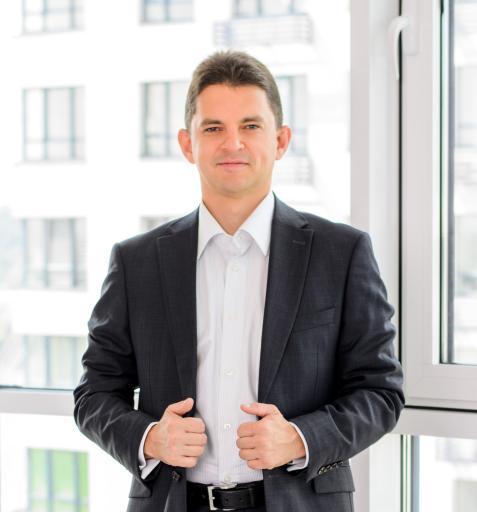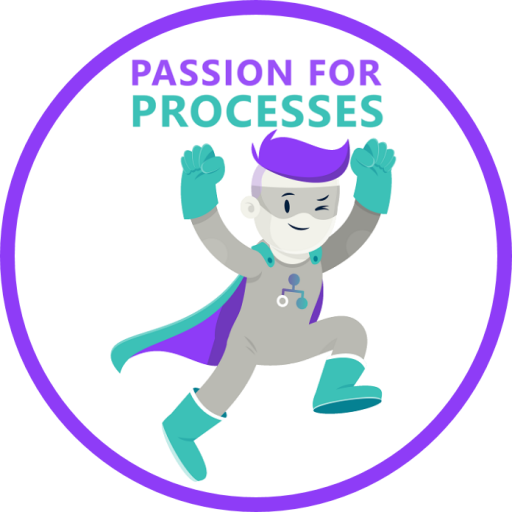Hello everyone,
I'm a beginner in ARIS and ARIS Simulation. As a part of my Master-Thesis I modeled a tumor-documentation-process. In this (EPC-)process I show the functions a documentary (one person) should do to document all necessary information of a patient. All function have a time. And the documentary (position) has a time-model.
Now, I would like to know with the simulation, how many time it takes to document 1 patient, 100 patients, 200 patients, etc. per day, month, year.
My start-event has (for example) a frequency of 7 per day. In my opinion it means, 7 patients. But unfortunately, I guess I can't use the frequency of the event for the number of patients. Why do I think so? Because, if I start the simulation for one month, the output statistic shows another number in the event than expected. I would expect something about 175 (25 working days * 7 patients per day), but the simulation shows 234. Where do I have to put my patients-number? Is it correctly to put the patients number into the frequency of the start event?
Furthermore, I have two end-events. [Documentation completed] and [Documentation canceled]. Also, the simulation shows in the [Documentation completed] event 30 and in the [Documentation canceled] 17. I would expect to have in sum [Documentation completed] + [Documentation canceled] = 234. Is it possible, that my process isn't correctly?
It would be great if an advanced user could help me.
Thanks!
Hi Valeria,
you seem to have some incorrect assumptions regarding the simulation. Let's try to clear things up.
If you restrict the working time of the human resources, this will not affect the simulation time. The simulation will always use 24 hours per day and 7 days per week. So the frequency set at your start event will be applied to all calendar days of your simulation period. Since you wrote that it's one month, I would have expected that the event occurres between 196 and 217 times, depending on the month. Yours seems to be a bit longer.
Anyways, if your process is triggered by a patient needing a tumor documentation, then the respective start event is indeed the proper place to set the number of patients you expect to show up for such a documentation. But you probably need to define a more elaborate pattern for it. If you use the "Frequency (daily)" attribute, the simulation will simply spread the 7 patients over the 24 hours of a day in intervals of 3.4 hours. But the patients will probably not show up in the evening and during the night between, say, 5 pm and 7 am. With the help of a Schedule model which you assign to the start event, you can define an instantiation pattern where the 7 patients only arrive between 7 am and 5 pm on weekdays. How this can be done is described in the ARIS Help and there is also an example in the United Motors Group example database. The respective EPC is called "Receipt of goods".
The fact that your end events are in sum not activated the same number of times as your start events is to be expected. The frequency you defined for the start event will make the simulation trigger the event 7 times per day on every day of the simulation period. If the process instances created by this trigger take longer than a day, e.g. because the processing times of the activities are so long or the position you assigned is not able to deal with so many instances at once, then they will not be finished by the end of the simulation time. So at the end of simulation time there are still instances which have not reached one of the end events and the activations there are fewer than at the start event.
That should not be a problem, though. If you want to know how long a process instance took from start to a certain end event, you can look this up in the detailed process statistics. You may need to activate the creation of these statistics in the simulation options. They are called "Processes (det.)" there. If you need an average the throughput time, you can export the statistics table to an Excel or CSV format and then calculate it with a spreasheet application.
Hope this helps,
Ralf
Hi Ralf,
thank you a lot! Your information helped me very much and it works!
I have another scenario, if I may?
What if I want to know how much patients a documentary can document per day, month, year? So, what if I want to keep my start event variable. Is such an idea feasible? Can I define somewhere that one documentation of a patient takes for example, all in all 15 minutes (sum of the time of the functions). And than the simulation calculates how much patients a documentary made or is able to document in one day (with consideration of the schedule model of the position: working time: 8 hours a day, minus holiday,...)?
Thank you in advance!
Valeria
The calculation you are describing would be a simplistic way of determining the capacity of a resource. You could do that with a spreadsheet. The process simulation takes into account all the time-based interdependencies and is also able to cope with variabilities in execution times (You can define them as probability distributions.) and how they affect the throughput time of each process instance. So you are not confined to working with averages.
In order to find out how many processes your resource can finish in one day, you could reduce the simulation time to one day and have a process instantiator create a certain number of process instances all at once at the start of the day. (You can do this with a Calender Event in a Schedule model that is assigned to the start event.) You could start with one instance, run a simulation, check if the number of finished instances is equal to the number of started instances and if this is the case, increase the number at the process instantiator by one, run another simulation, check again and so on until the number of finished instances is lower than the number of started instances.
That would be a special application case for process simulation. More commonly one tries to balance service levels and resource utilization. In principle, the more resources you throw at a process, the more instances you are able to complete in a given time frame with less wait times. But resources cost money and with a given demand (which is defined by the process instantiators) there is a threshold above which more resources will not lead to lower throughput times. In order to find the sweat spot (depending on your goals), you'd not vary the demand as in the case above but the number of employees in your resource, run a simulation for each value and check how utilization or average throughput times develop. The simulation in ARIS can help you with this with the so-called simulation experiments. Those allow you to define a range and steps for the number of employees of a resource and run the respective scenarios automatically. Check the ARIS help for details. (Unfortunately it does not allow you to vary the number of process instances. That's why I didn't mention it above.)
Good morning Ralf!
Thank you very much!
My last question (I'm so sorry for the intrusiveness):
I defined a Schedule-Model for my start-event. There I defined every month (Jan-Dec) with process instance to find out, how much time the documentary spent for a year. But the documentary has holidays, public holidays and disease days.
Now, I don't know how to model these days to make sure the simulation pull the days off.
I modeled it in the schedule-model of my start-event. There I created (additionally to my other calender events Jan-Dec) a calendar event "holiday", set for example, 28 days, declared the (simulation-) Attribute "free time" and the Attribute: processing instance = 0. But it doesn't seem to work. The processing instances don't reduce. They are the same with or without the calendar event "holiday".
By the way, the working time at a week I defined in the position schedule-model -> without weekend and with break time. This seem to work.
So, how can I model my schedule-model to make sure that the documentary doesn't work the whole year?
Thank you very much in advance!!
Valeria
Vacation or breaks of a resource can only be defined in the Schedule model of that resource, i.e. in your case the role that does the tumor documentation. If I understood you correctly, you have assigned a Schedule model to it which defines the working hours of the role, right?
The process instantiation is unaffected by that and this is usually correct because the demand for a service produced by a process usually does not stop just because a resource goes on vacation. Isn't that also what's happening in your case? That even during the documentalists vacation there are patients who need their tumors documented? They'd have to wait until the documentalist is back from vacation and that's what you could also see in the simulation. You'll also be able to see how long it takes until the documentalist has reduced the waiting queue or if he/she is not able to reduce it.
"[...] because the demand for a service produced by a process usually does not stop just because a resource goes on vacation. Isn't that also what's happening in your case?[...]"
Unfortunately not. It stops. Because it is not that bad if an documentation of a patient is not done. The documentary can catch it up if he/she comes back.
So is there no way to readjust my situation?
So the people who would have needed a documentation during the vacation of the documentalist will not get that later, when the documentalist is available again? That sounds a bit odd.
But if it is that way, you could adjust the Schedule with your process instantiators. It's gonna be a lot of effort, though, because you'd need to define an instantiator for every day of your simulation time on which patients can arrive. (At least I cannot think of an alternative with recurrence.) So for every day your resource is available, you'd create a Calendar event which creates the number of instances corresponding to the number of patients arriving. And for days where the resource has off (weekends or vacation) you don't create calendar events.
"[...] So the people who would have needed a documentation during the vacation of the documentalist will not get that later, when the documentalist is available again? That sounds a bit odd."
The main documentation makes a doctor - so the patient becomes his/her results immediately. But the documentary documents special attributes from the main documentation in a separate module, for example, for evaluations etc. So if the documentary tap his attributes 2 weeks earlier or later - that doesn't matter.
Yes, the way you described is really a bit difficult. Maybe I simply define one month with processing instance = 0. So it would represent the vacation plus disease days. So one month the documentary doesn't documents anything...
Nevertheless, thank you very much for your quick help!







